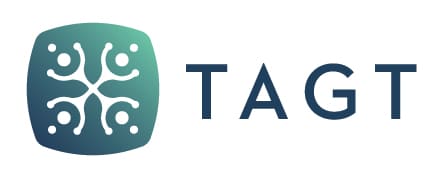The COVID-19 pandemic highlighted and worsened long-standing inequities in education, particularly in access to Advanced Placement (AP) and Dual Credit (DC) programs. For historically underserved groups such as African American, Latinx, and low-income students, these inequities were already barriers to academic success. As educators strive to promote equitable access to advanced coursework, it’s crucial to understand the pandemic’s impact on Advanced Placement (AP) and Dual Credit (DC) outcomes, particularly among marginalized groups. Recent research from the University of North Texas investigates how race, socioeconomic status, and geographic locale were related to student success on AP exams and DC course completion between 2019-2021 (Hill et al., 2024; 2025). This research brief offers teachers and district leaders practical insights from a recent study on how race, socioeconomic status (SES), and geographic location were related to student success in advanced coursework during the pandemic (2019-2021). The findings offer guidance on how to better support students in their journey toward college readiness.
Key Findings
- Racial Disparities in Success Rates: The data revealed significant racial disparities in AP success. Asian students had the highest success rate on AP exams, while African American and Latinx students lagged behind. This disparity points to systemic barriers, including lower access to academic resources, lack of preparation, and fewer role models for students of color in advanced coursework. Teachers can play a critical role in identifying these barriers early and advocating for targeted support and intervention.
- Racial and Ethnic Disparities: The study found persistent disparities in AP success rates. Asian students demonstrated a higher success rate (β = 0.40), while African American (β = -0.04) and Latinx students (β = -0.02) had lower rates. These results reinforce the need for targeted support for underrepresented groups (Hill et al., 2024; 2025). Conversely, low SES students also faced significant challenges (β = -0.11), highlighting the importance of addressing economic barriers to achievement (Hill et al., 2024; 2025).
- Geographic Locale: Geographic locale played a pivotal role in AP and DC success. Rural districts exhibited the lowest success rates in AP exams (β = -2.26), likely due to limited access to resources. However, these districts showed higher DC course completion rates, possibly due to partnerships with local community colleges (Hill et al., 2024; 2025). This suggests that tailored interventions based on locale could help bridge the gap in college-readiness indicators.
- Geographic Disparities: Geographic location was also related to students’ success. Rural students, in particular, faced the most significant barriers to AP exam success due to limited access to advanced coursework, fewer qualified teachers, and fewer academic support resources. However, rural districts saw higher success in DC course completion, likely due to partnerships with local community colleges. Teachers in rural areas can work to strengthen these partnerships and advocate for more AP or virtual learning opportunities for students.
- Post-Pandemic Enrollment Patterns: The pandemic disrupted AP enrollment and exam-taking patterns, resulting in a drop in successful exam completions despite increased enrollment. This points to challenges with AP exam desirability and preparation under remote learning conditions. DC course completion, however, remained relatively stable throughout this period, offering a more consistent pathway to college readiness (Hill et al., 2024; 2025).
- Challenges for Low-Income Students: Low-SES students faced considerable challenges in both AP and DC coursework, with limited access to essential resources such as internet connectivity, test preparation, and tutoring. These students were less likely to succeed in AP exams, often due to financial constraints that prevent them from accessing study materials or taking exam preparation courses. Teachers can help by providing access to free or low-cost tutoring programs and collaborating with community organizations to bridge these gaps.
Actionable Strategies for School Districts
- Create Inclusive AP and DC Opportunities: Teachers and academic counselors can actively recruit students from underrepresented groups into advanced coursework and provide them with the support they need to succeed. Establishing mentorship programs where experienced students help guide their peers can create a more inclusive learning environment. District administration can perform audits of advanced academic courses to better align advanced pathways leading from middle school through graduation to better increase postsecondary enrollment and retention. A district audit of advanced academics courses should be conducted through an equity lens, ultimately answering the question of “Do all students across all campuses have access to advanced courses on their campus with systems and teachers to support them?”
- Leverage Local Resources: Schools in rural and underserved areas should collaborate with local colleges and organizations to expand access to advanced coursework. Online learning platforms can also provide AP classes in districts where in-person options are limited, allowing all students to participate in college-prep courses. Families are local resources; inform and empower racially diverse and multilingual households with the tools and knowledge to support their children.
- Reallocate District Funding: Districts have access to several funding streams that may/may not be properly allocated. House Bill 3 Outcomes Bonus Funding should be used for college, career, and military readiness-related initiatives. Reallocating funding to support AP and DC enrollment, access, and pedagogical support fall within those areas. House Bill 8 FAST funding provides reduced rates for low socioeconomic students, decreasing the cost of coursework in DC classes. Additionally, Title funds may/may not be used in various ways to offset AP student fees, provide scholarships, etc.
- Adapting Post-Pandemic Teaching: The pandemic forced many teachers to adopt new technologies and remote learning strategies. While challenging, these tools can still be used to supplement learning, particularly for students who may need extra support. Providing accessible study materials and flexible learning schedules can help bridge the gap for students who struggled with traditional methods.
- Focus on Psychosocial Supports: Students and schools do not exist in a vacuum. Advanced coursework for historically underrepresented populations has the potential to create a difficult transition. Intentionally supporting students new to the rigors of advanced courses by way of building confidence in students, creating protocols and systems of support, and providing opportunities to learn and fail forward are critical for student success within the classroom.
- The findings from these studies show that racial, socioeconomic, and geographic factors continue to play a role in student success in advanced coursework. Teachers and district leaders can help close these gaps by fostering inclusive environments, advocating for equitable resources, and adapting their teaching to meet students’ needs. By applying these insights, educators can better support all students in achieving success in AP and DC programs, helping them prepare for college and future opportunities.
Conclusion
As schools recover from the pandemic, a focus on equity in advanced coursework is essential. By addressing the needs of underrepresented students, particularly those from low SES backgrounds or rural districts, teachers can help close the achievement gap and foster a more inclusive learning environment. Through these efforts, educators can ensure that all students have the opportunity to succeed in AP and DC courses and achieve college readiness.
References
Hill, T. D., Shen, Y., Ji, V. W., & Hodges, J. (2024). Dual credit completion in Texas from 2019–2021: An examination of the COVID-19 years. Journal of Advanced Academics, 36(2), 214-239. https://doi.org/10.1177/1932202X241304515
Hill, T. D., Shen, Y., Ji, V. W., & Hodges, J. (2025). Assessing the COVID-19 pandemic’s influence on Advanced Placement college readiness indicators in Texas from 2019 to 2021. Journal for the Education of the Gifted, 48(2), 103-126. https://doi.org/10.1177/01623532251323596
Promoting Equity in Advanced Coursework Post-Pandemic: A Data-Driven Approach for Teachers PDF





